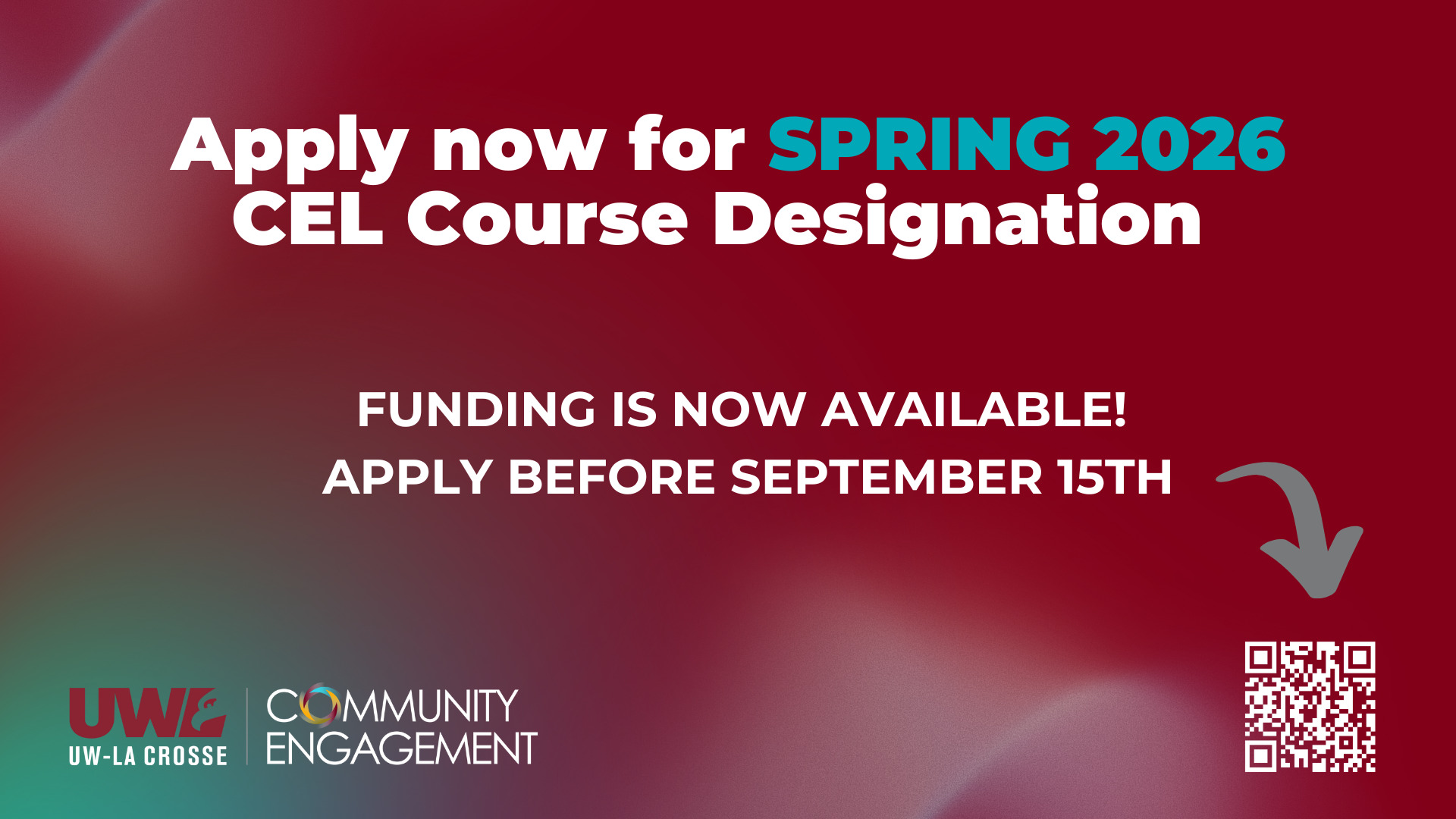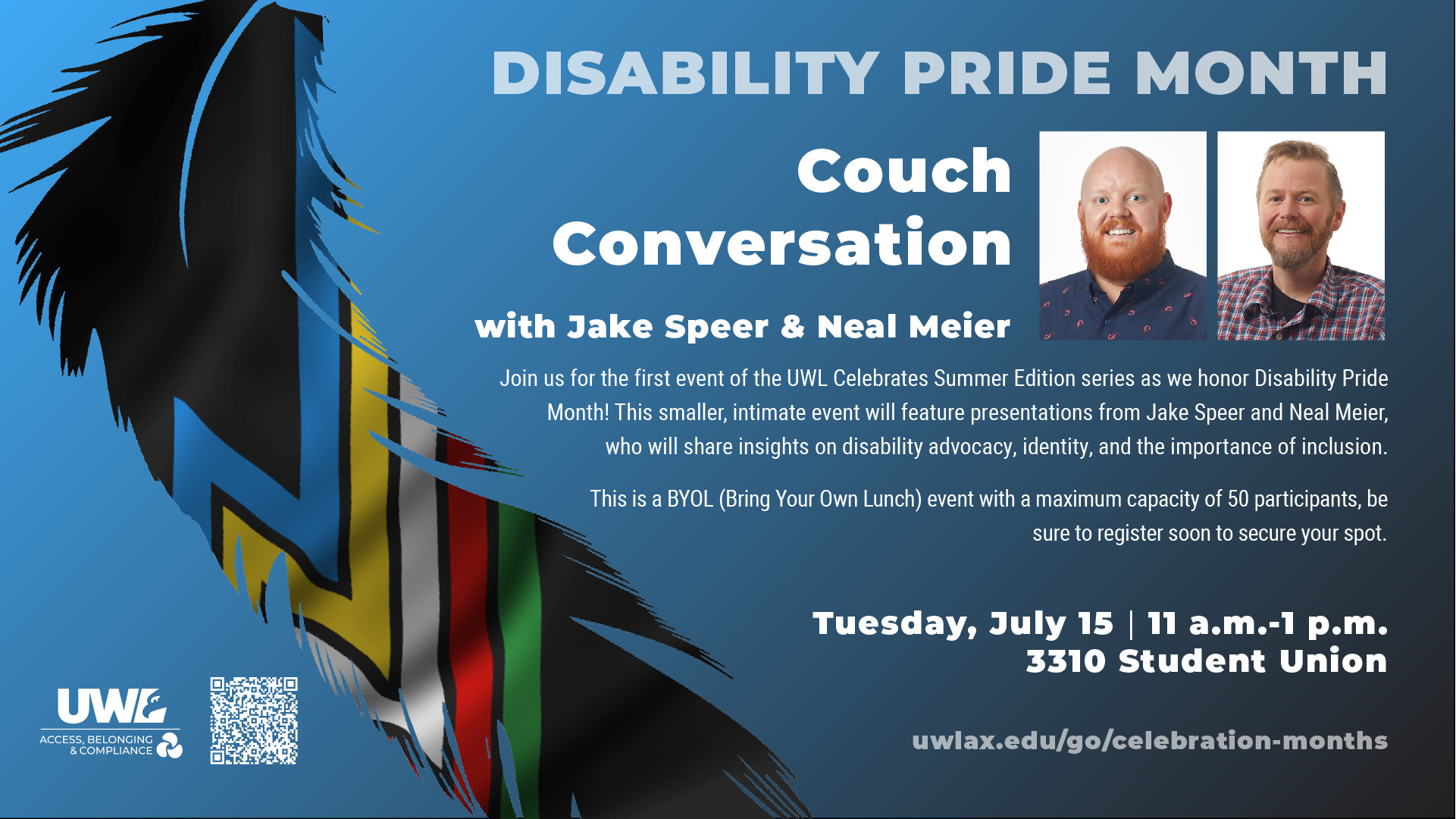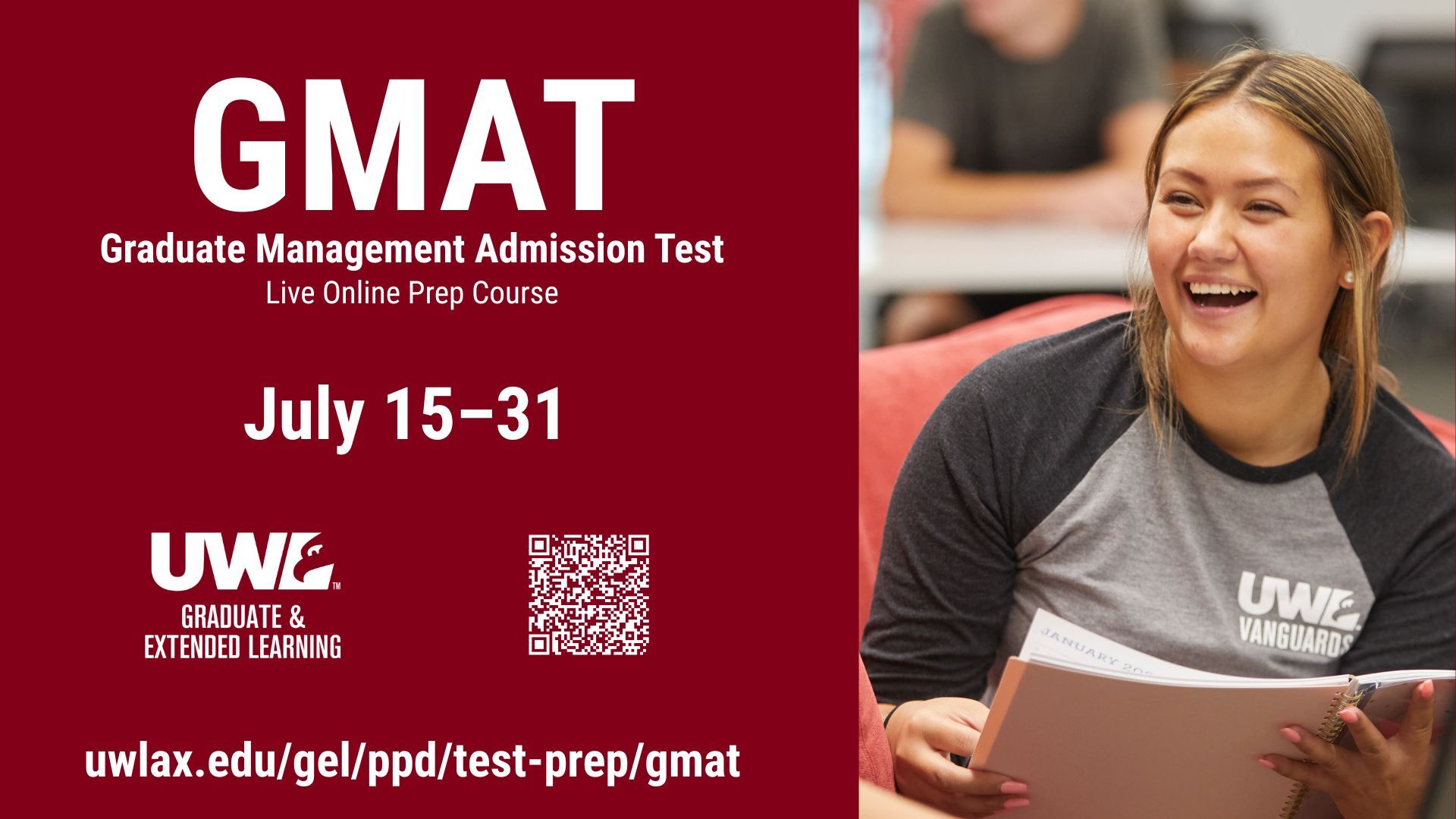Physician Assistant Studies
Program profile
Program profile
Accreditation
The Accreditation Review Commission on Education for the Physician Assistant (ARC-PA) has granted Accreditation-Continued status to the University of Wisconsin–La Crosse Physician Assistant Program. Accreditation-Continued is an accreditation status granted when a currently accredited program is in compliance with the ARC-PA Standards.
Accreditation remains in effect until the program closes or withdraws from the accreditation process or until accreditation is withdrawn for failure to comply with the Standards. The approximate date for the next validation review of the program by the ARC-PA will be September 2027. The review date is contingent upon continued compliance with the Accreditation Standards and ARC-PA policy.
Mission & vision
Mission
In collaboration with nationally renowned partners, we develop exemplary PAs, in an inclusive culture, who equitably optimize the health of our region.
Vision
We will continue to be a nationally recognized program by:
- Selecting students with the academic background, interpersonal skills and maturity necessary to be outstanding physician assistants
- Educating students who will excel in improving the health and wellness of patients through the supervised practice of medicine
- Developing students who are grounded in professional ethics, cultural sensitivity, and the use of evidence based medicine.
Program Goals
Goal 1: The program will attract highly qualified applicants with the academic background necessary to successfully complete the rigorous training required to become a physician assistant.
|
Benchmark |
Program Outcome* |
Benchmark Result |
|
Number of verified CASPA applications will equal or exceed 400 |
479 |
Met |
|
Ratio of verified CASPA applications to matriculants will equal or exceed 14.2:1 ** |
17.1:1 |
Met |
| Mean cumulative undergraduate GPA of top 90 applicants will equal or exceed 3.0 |
3.94 |
Met |
|
Mean cumulative undergraduate GPA of matriculants will equal or exceed 3.0 |
3.92 |
Met |
|
Mean science undergraduate GPA of top 90 applicants will equal or exceed 3.0 |
3.93 |
Met |
|
Mean science undergraduate GPA of matriculants will equal or exceed 3.0 |
3.90 |
Met |
| Mean Verbal GRE score of top 90 applicants will equal or exceed 140 |
156 |
Met |
|
Mean Verbal GRE score of matriculants will equal or exceed 140 |
155 |
Met |
| Mean Quantitative GRE score of top 90 applicants will equal or exceed 140 |
157 |
Met |
|
Mean Quantitative GRE score of matriculants will equal or exceed 140 |
155 |
Met |
|
Correlation Coefficient of Undergraduate Science GPA with First Semester PA Program GPA will be weakly positive or stronger (R>0.20) |
0.01 |
Not Met |
|
Student Attrition Rate will be 10% or less |
0% |
Met |
*Data pertains to the Class of 2024, who applied in 2021, matriculated in June 2022, and graduated in May 2024.
**Derived by dividing 400 applications (benchmark) by 28 matriculants.
Goal 2: The program will ensure that its graduates attain the medical knowledge necessary to become highly competent physician assistants.
|
Benchmark |
Program Outcome* |
Benchmark Result |
|
100% of graduates’ End of Curriculum Exam scores will equal or exceed 1400 |
100% |
Met |
|
100% of graduates will earn mean preceptor ratings for Medical Knowledge of 3.0** or higher on a 5-point Likert Scale |
100% |
Met |
|
Program’s First-time Taker PANCE Pass Rate will exceed the National First-time Taker Pass Rate of 93%** |
100% |
Met |
|
Program’s All Taker PANCE Pass Rate will be 100% |
100% |
Met |
*Data pertains to the Class of 2024, who applied in 2021, matriculated in June 2022, and graduated in May 2024.
**Student “processes basic knowledge; not always able to apply to cases.”
***NCCCPA Class of 2024
Goal 3: The program will ensure the development of excellent interpersonal skills essential for the effective practice of medicine as a physician assistant.
|
Benchmark |
Program Outcome* |
Benchmark Result |
|
On the final didactic simulated patient encounter, 100% of students’ communication scores will equal or exceed 70% |
100% |
Met |
|
On the final clinical simulated patient encounter, 100% of students’ communication scores will equal or exceed 70% |
100% |
Met |
|
100% of graduates will earn mean preceptor ratings for Patient Rapport of 3.0** or higher on a 5-point Likert Scale |
100% |
Met |
|
100% of graduates will earn mean preceptor ratings for Professional Relationships of 3.0*** or higher on a 5-point Likert Scale |
100% |
Met |
*Data pertains to the Class of 2024, who applied in 2021, matriculated in June 2022, and graduated in May 2024.
**Student “generally establishes good rapport; occasionally has difficulty communicating.”
***Student “maintains acceptable and workable co-worker relationships.”
Goal 4: The program will educate physician assistants who will meet the healthcare needs of the regions served by the partner institutions.
|
Benchmark |
Program Outcome* |
Benchmark Result |
|
30% or more graduates will accept initial employment in the regions served by the partner institutions |
34.5% |
Met |
|
5-year average rate of initial regional employment will equal or exceed 40% |
41.8% |
Met |
|
25% or more graduates will accept initial employment in partner institutions |
31.0% |
Met |
|
90% or more graduates will be employed*** as physician assistants within 6 months of graduation |
100% |
Met |
*Data pertains to the Class of 2024, who applied in 2021, matriculated in June 2022, and graduated in May 2024.
Program Learning Outcomes (Competencies)
|
The program’s curriculum has been developed in accordance with the Accreditation Standards for Physician Assistant Education by the Accreditation Review Commission on Education for the Physician Assistant (ARC-PA). As such, graduates are expected to demonstrate competency in the following areas: |
|
Medical Knowledge |
Apply established and evolving core medical knowledge, including biomedical, epidemiological, behavioral, and psychosocial principles, to provide patient-centered care across the lifespan. (PLO1) |
|
Interpersonal Skills |
Establish and maintain therapeutic relationships with patients and families that foster the effective exchange of information and shared decision making. (PLO2) |
|
Communicate patient health information in written, oral, and digital forms to patients, families, and members of the healthcare team. (PLO3) |
|
|
Collaborate with members of the healthcare team to provide integrated, patient-centered care. (PLO4) |
|
|
Clinical and Technical Skills |
Gather and document accurate and essential information about patients through history taking and physical examination. (PLO5) |
|
Safely perform medical, diagnostic, and surgical procedures commonly encountered upon entry into general medical practice. (PLO6) |
|
|
Clinical reasoning and Problem Solving |
Synthesize information to develop and prioritize a differential diagnosis. (PLO7) |
|
Recommend and interpret diagnostic and screening tests. (PLO8) |
|
|
Develop, implement, and modify management plans that optimize patient health and enable shared decision making. (PLO9) |
|
|
Professional Behaviors |
Demonstrate professional and ethical behaviors necessary to provide safe and quality care to patients and populations. (PLO10) |
|
Demonstrate critical analysis of personal practices, medical literature, and other health information to improve clinical practice outcomes for patients and populations. (PLO11) |
Curriculum
This full time, in-person program accepts and enrolls one class per year. Accepted students must begin the program in the summer, with classes typically beginning after Memorial Day.
The curriculum is tightly sequenced over 24 months and consists of a 12-month Preclinical Year and a 12-month Clinical Year. The Clinical Year includes 44 weeks of clinical rotations.
*In extenuating circumstances, a current student may request extension of the didactic curriculum from one to two years. Program administration will only consider requests submitted by current students (requests will not be accepted as an initial enrollment option for incoming students). The clinical phase of the curriculum is only available on a full-time basis.
Clinical rotations
Students complete eleven, 4-week clinical rotations during the second year (June - April). Seven rotations are in required areas of medicine and intended to provide a broad foundation for a generalist physician assistant. Required areas include:
- General surgery
- Emergency medicine
- Obstetrics/gynecology
- Pediatrics
- Internal medicine
- Family medicine
- Behavioral Health
The remaining four Specialty rotations occur in practice environments intended to broaden skill and knowledge base in addition to providing depth to the student's area/s of interest. Supplemental choices are determined by the program based on preceptor/site availability and student interest.
Clinical rotations are completed within the health systems of our partner institutions. This provides students with a variety of opportunities for experiences in the many rural and suburban clinics and hospitals within these health systems in Wisconsin, Minnesota, and Iowa. Additional information about partner specialties and practice sites is available via the links below.
Students are responsible for their own housing and transportation during the clinical year. Some clinical sites are able to provide housing; however, this is highly specific to the location and current availability. Students are encouraged to secure housing through known contacts, personal connections, former students, and the program’s index of clinical housing opportunities.
Prospective and enrolled students are not required to provide or solicit clinical sites or preceptors.
Facilities
Health Science Center (HSC) serves as the UWL-PA program's home. The HSC provides lecture space for didactic courses, exam rooms, and a student resource room. Take a virtual tour of the facility you will use in the first year of your program.
Program history
UW-La Crosse, in partnership with the Gundersen Medical Foundation of La Crosse and the Mayo Clinic School of Health Science of Rochester, Minnesota, first established this physician assistant educational program in 1995 as a Bachelor of Science program. In June of 2004, the program enrolled its first class in the Master of Science in Physician Assistant Studies program. Marshfield Clinic joined the programmatic partnership in August of 2017. This addition provided additional sites for student clinical rotations. Over the course of the program, the regions served by our students through partner institutions have expanded to include central and western Wisconsin, eastern Minnesota, and Iowa.






![UWL College of Business Administration faculty and Mayo Clinic Health System leaders merged academic insight with industry expertise to help shape a better healthcare experience for all. [Pictured left to right: Uzay Damali and Tanner Holst, '01]](/contentassets/d2492d337f8a4841b98d59100cb0f8ab/2025-uwl-cba-mayo-article-collaboration-92.jpg/Medium)






